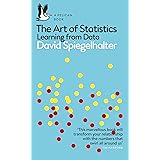Calculate Z-Scores in SPSS: A Comprehensive Guide
Calculate Z-Scores in SPSS, Z-scores form an essential aspect of statistical analysis, especially when dealing with standardized data.
Calculate Z-Scores in SPSS
In this guide, we will explore the concept of Z-scores, explain how to calculate them, and delve into their role within SPSS (Statistical Package for the Social Sciences).
Whether you are a researcher, student, or data analyst, mastering Z-scores will significantly enhance your data interpretation skills.
What is a Z-Score?
A Z-score, also known as a standard score, indicates how many standard deviations an individual data point is from the mean of a dataset.
Z-scores help in understanding the position of a particular score within a distribution.
If a Z-score is zero, it signifies that the data point is exactly at the mean; positive Z-scores indicate values above the mean, while negative Z-scores denote values below the mean.
The Formula for Z-Score Calculation
The calculation of a Z-score uses a straightforward formula:
z-score = (x – μ) / σ
Where:
- Z = Z-score
- X = Raw score (the value for which you want to find the Z-score)
- μ = Mean of the dataset
- σ = Standard deviation of the dataset
This formula allows you to assess how unusual or typical a score is relative to the entire dataset, aiding in decisions based on data distribution.
Why are Z-Scores Important?
Z-scores serve multiple purposes in the realm of statistics:
- Comparison Across Different Datasets: By standardizing scores, Z-scores allow for comparisons between different datasets or distributions that may have varying means and standard deviations.
- Identification of Outliers: Z-scores can be instrumental in identifying outliers in your data. Generally, a Z-score greater than 3 or less than -3 is considered an outlier, as it represents a point that is considerably far from the mean.
- Facilitation of Normal Distribution Understanding: In a normal distribution, about 68% of data falls within one standard deviation from the mean (Z-scores between -1 and 1), 95% falls within two standard deviations (Z-scores between -2 and 2), and 99.7% falls within three standard deviations (Z-scores between -3 and 3). This property of Z-scores allows for the effective evaluation of probabilities and statistics.
How to Calculate Z-Scores in SPSS
Calculating Z-scores in SPSS is a straightforward process that can be accomplished through the following steps:
Step 1: Open your Dataset
Launch SPSS and load the dataset for which you want to compute Z-scores.
Step 2: Compute Descriptive Statistics
- Go to Analyze in the top menu.
- Select Descriptive Statistics followed by Descriptives.
- Choose the variable(s) for which you want to calculate the Z-scores.
- Click on the Save Standardized Values as Variables option. This step instructs SPSS to compute the Z-score for each data point.
Step 3: Review the Output
Once you click OK, SPSS will generate an output window with the descriptive statistics and a new variable in the dataset that contains the Z-scores for the selected variable(s). This new variable will often have a name similar to the original variable with a “Z” prefix.
Step 4: Analyze the Z-Scores
You can now analyze the Z-scores to identify outliers, compare values against the mean, or further investigate data distribution.
Practical Example
Let’s illustrate the process with a practical example. Suppose you have a dataset containing students’ test scores. By calculating Z-scores:
- You find that a score of 85 has a Z-score of 1.5, indicating it is 1.5 standard deviations above the mean score.
- Conversely, a score of 60 may yield a Z-score of -2.0, suggesting it is 2 standard deviations below the mean, thereby identifying it as a potential outlier.
Conclusion
Mastering Z-scores and their calculation in SPSS profoundly enhances your ability to analyze and interpret data meaningfully.
Understanding how Z-scores reflect the position of data points within a distribution not only aids in identifying outliers but also facilitates easier comparisons across various datasets.
By incorporating Z-scores into your statistical toolkit, you can bolster your research and analysis prowess. Whether you’re analyzing test scores, survey data, or any other numerical dataset, Z-scores will provide you with invaluable insights.
By continuously practicing and applying these concepts, you’ll become proficient in utilizing Z-scores, ultimately leading to more informed data-driven decisions.
Explore the world of statistics with confidence and clarity!
Data Manipulation Techniques with dplyr



